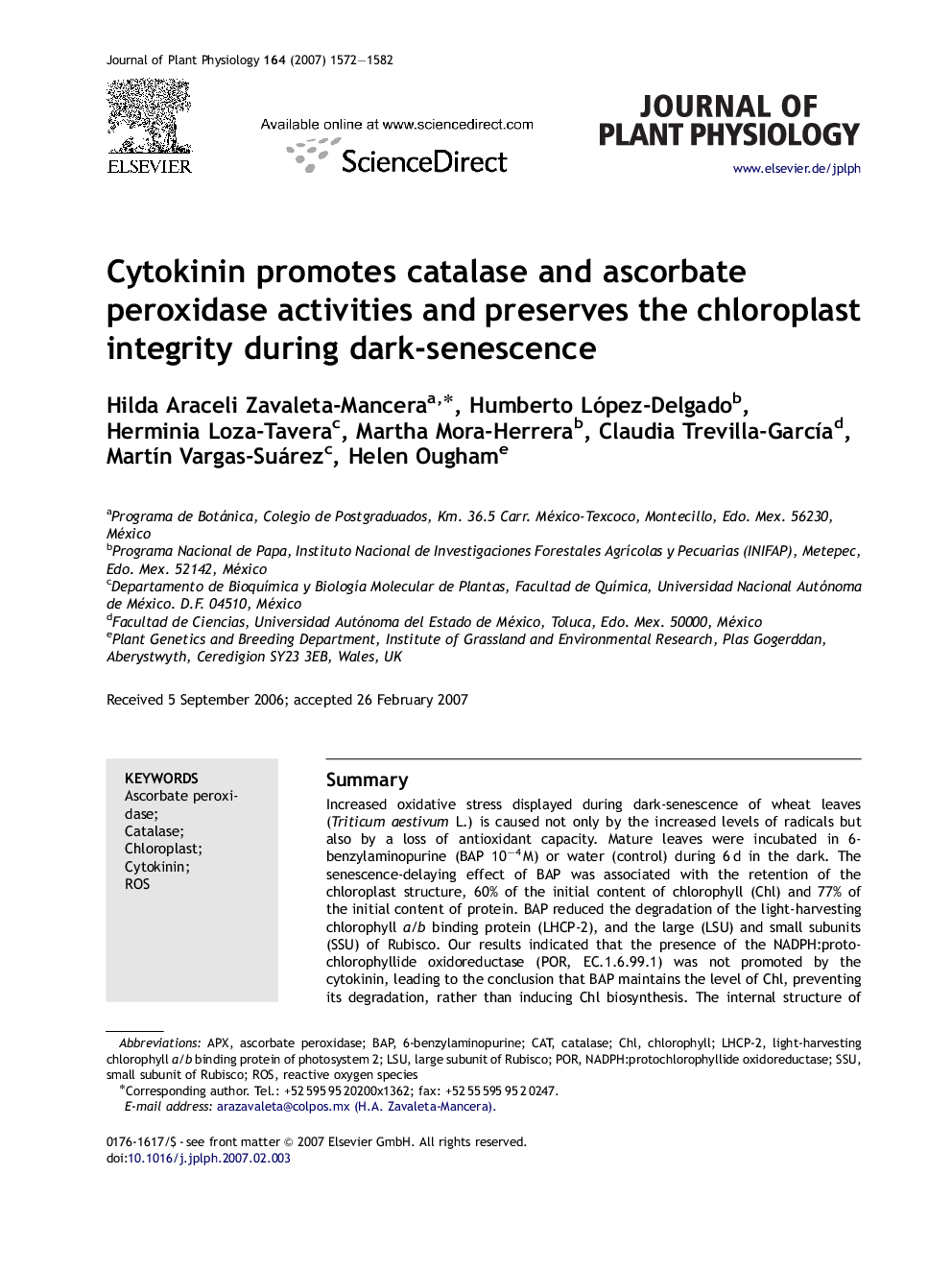| Article ID | Journal | Published Year | Pages | File Type |
|---|---|---|---|---|
| 2057646 | Journal of Plant Physiology | 2007 | 11 Pages |
SummaryIncreased oxidative stress displayed during dark-senescence of wheat leaves (Triticum aestivum L.) is caused not only by the increased levels of radicals but also by a loss of antioxidant capacity. Mature leaves were incubated in 6-benzylaminopurine (BAP 10−4 M) or water (control) during 6 d in the dark. The senescence-delaying effect of BAP was associated with the retention of the chloroplast structure, 60% of the initial content of chlorophyll (Chl) and 77% of the initial content of protein. BAP reduced the degradation of the light-harvesting chlorophyll a/b binding protein (LHCP-2), and the large (LSU) and small subunits (SSU) of Rubisco. Our results indicated that the presence of the NADPH:protochlorophyllide oxidoreductase (POR, EC.1.6.99.1) was not promoted by the cytokinin, leading to the conclusion that BAP maintains the level of Chl, preventing its degradation, rather than inducing Chl biosynthesis. The internal structure of chloroplasts was maintained in BAP-treated leaves for up to 6 d, with well-organized grana thylakoids and small plastoglobuli; in contrast, chloroplasts of control leaves deteriorated rapidly from day 4 with disorganized internal membranes, and more and larger plastoglobuli. BAP increased the activities of catalase (CAT, EC 1.11.1.6) and ascorbate peroxidase (APX, EC 1.11.1.11) and reduced the level of H2O2 in the delayed-senescence tissue. The present research indicates that BAP reduces levels of reactive oxygen species (ROS), and enhances the activity of antioxidant enzymes (CAT, APX). Our results suggest that BAP protects the cell membranes and the photosynthetic machinery from oxidative damage during delay of senescence in the dark.
